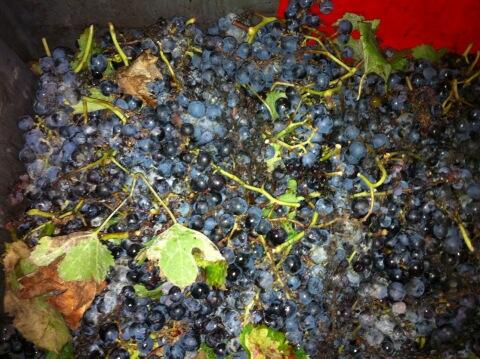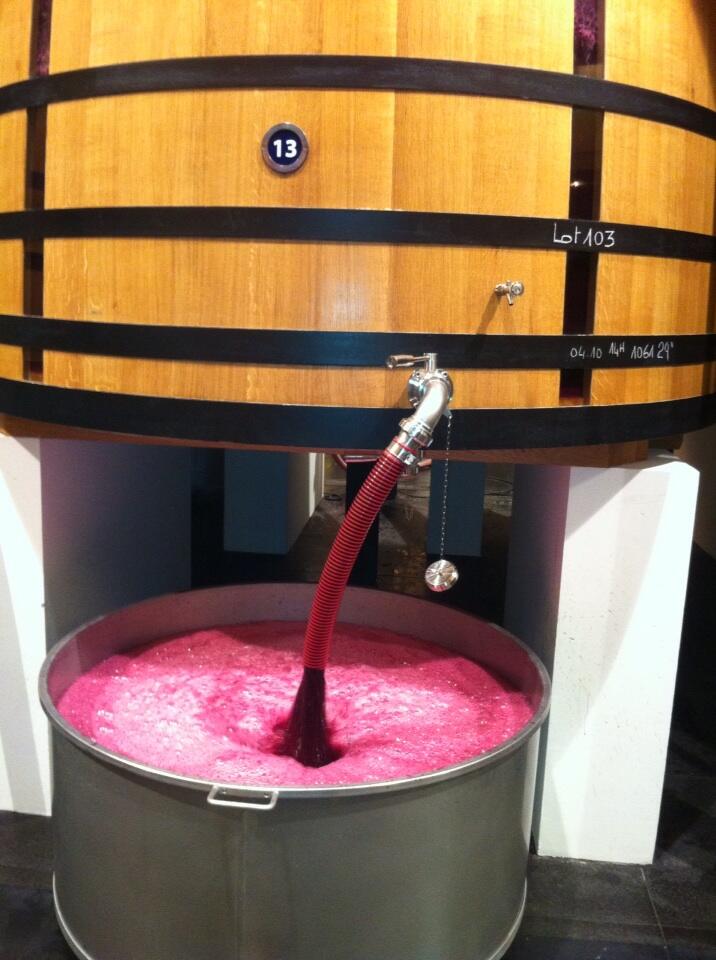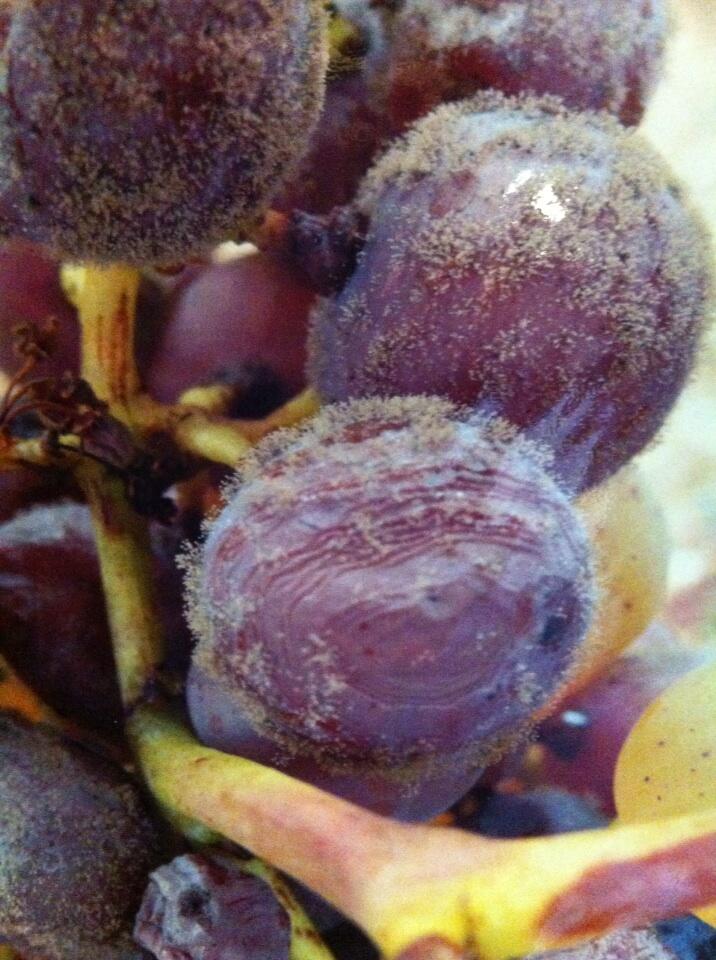 |
| This is what rot looks like on Cabernet Sauvignon grapes. These grapes were
harvested, but then rejected during manual sorting at the winery. These
were picked at a top wine estate in the Medoc. |
 | |
Quite clearly the 2013 Bordeaux harvest will be a struggle.
Perhaps a flippant summary for the 2013 harvest would be:
'Rain, Rain and more Rain'
Stéphane Defraine, president of the Entre-Deux-Mers Winegrowers Union, said hailstorms will cost winegrowers across Bordeaux at least €300 million, or about $400 million, in sales.
The French agriculture ministry projects this year's Bordeaux harvest will be about 4.4 million hectoliters, down 19% from 2012. The small 2013 crop puts wine producers in a difficult spot: low volumes will make it hard to meet global demand, but the weak quality of the grapes will make it tough to compete.
A summary of the 2013 growing season in Bordeaux:
January/ February/ March were very cold and wet.
April had some warm days, but was also very cold.
May was wet and cold. Too much vegetation on the vines (from the wet spring) meant that extra shoots had to be discarded on each vine. Mildew was present.
June was wet during flowering. Caused Millerandage (malformation of bunches)and set
for late harvest.
July was hot but with severe rain at the end of the month. Green
harvest to expose the fruit and hope for sunshine to ripen the grapes.
August was hot but with hail at the beginning of the month
in Entre Deux Mers caused losses equivalent to 78 million bottles.
September was wet and warm and humid. Rain Sept 27-29.
October was wet(3rd and 4th October
big rain) and the evenings were extremely humid. The harvest was
brought forward by many wine estates as rot was becoming a major issue on unripe
grapes. Initially planned to start October 7th, but many picked from
October 1st and all weekend. Harvest mainly finished in Medoc by
October 16th.
I was at Mouton Rothschild when all the employees were 'invited' to work over the weekend....literally all hands on deck.
The best soils of the Medoc eg the higer plateaux of Pauillac in between Mouton and Lafite had exceptionnally healthy grapes, but they also had the problems with possible rot due to the wet and humid conditions.
It was the most bizarre harvest as mostly the merlots of the Right Bank are harvested a week before the Cabernet Sauvignon of the Medoc. But due to the wet, damp weather grapes were harvested quickly. Some of the merlots were of uneven ripeness and the Cabernet Sauvignons were just OK.
Chaptalisation will take place at most Chateaux in order to bolster the wines.
Yields will be low due to the variable weather and severe selection of the best grapes.
'A year for the best terroir'......a quote during harvest from Paul Pontallier (managing director of Chateau Margaux)
A year for severe selection.......whether hand selected or by the optical sorting machines.
The taste of the wines........it is too early to say, but the growing conditions have been extremely challenging. We shall taste some of the post fermented juice over the next few months and we shall see the Primeur sample at the end of March 2014, when we will decide the quality. It would be miraculous if 2013 produces great wines!
Some optimisim from a Decanter article:
'We are looking at a vintage that is somewhere close to 2004 or 2007 in profile, even 2008, which for us was a very succesful year. ' Herve Berland, director of Chateau Montrose in Saint Estephe, told Decanter magazine.
'We are looking at a vintage that is somewhere close to 2004 or 2007 in profile, even 2008, which for us was a very succesful year. ' Herve Berland, director of Chateau Montrose in Saint Estephe, told Decanter magazine.
Volume in the Bordeaux region may fall to 543 million
bottles ( a drop of 30% from normal production). Smallest grape harvest since
1991.
Also we often overlook the Sauternes and Barsac areas for sweet wine production, when we talk about the Bordeaux harvest. This area thrives on the right kind of rot, but needs perfect climatic conditions.
Unfortunately the rain that pelted down at the end of October has impacted on the quantity, for what was initially looking like an excellent year for Sauternes.

Botrytis on the grapes at Chateau d'Yquem during the 2013 harvest. Maybe rot is welcome somewhere!!!
In conclusion the best Chateaux, who have the most financial resources to select the best grapes and employ sufficient people in the vineyards and also to have the most high tech equipment should be able to produce some good wines. The interesting fact is that if these climatic conditions took place in the early 1990sor 1970s there would not have been much wine produced at all. Perhaps Monsieur Berland from Chateau Montrose and Monsieur Pontallier have reasons to be optimistic for their wines. The prices will have to be fair for this vintage.
No comments:
Post a Comment